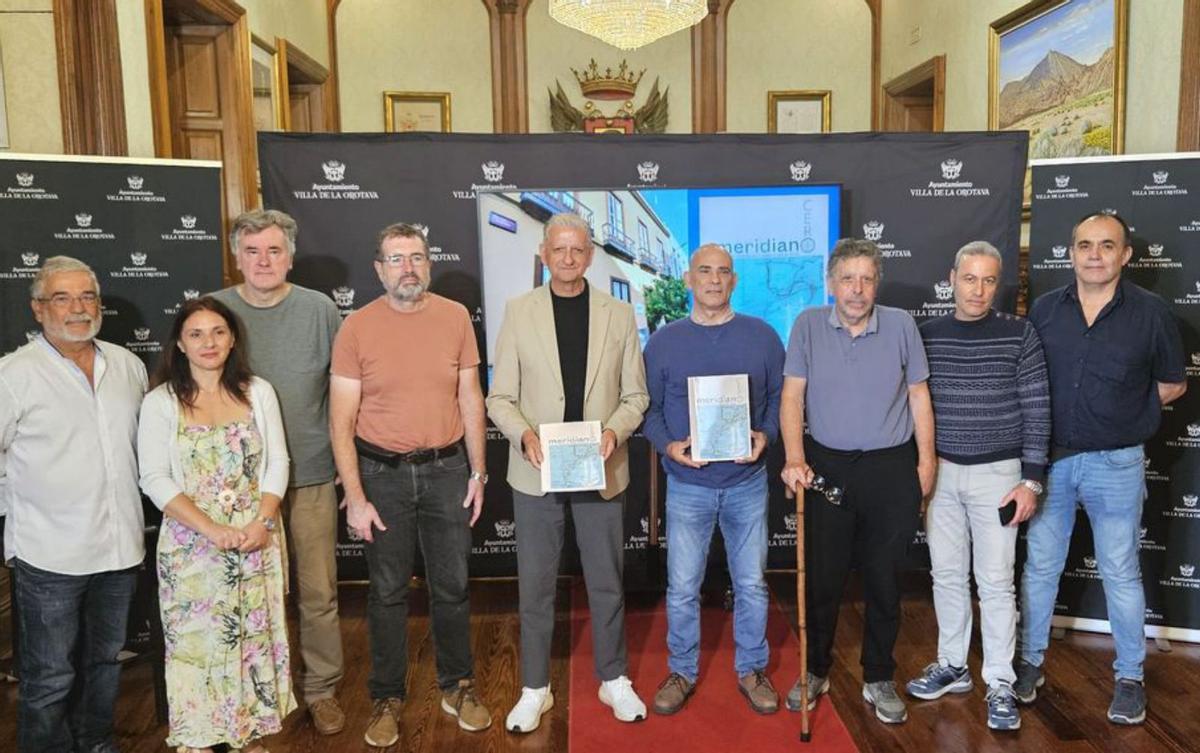The Canarian Orotava History of Science Foundation continues to add to complement the museum rooms it has at its headquarters on Calvario Street. Specifically, to complement the model of the ancient mills displayed at the entrance of the building, a new project is being added, which is the virtual reconstruction of the mills in the historic centre of La Orotava, and specifically of the section that runs between the Cuatro Esquinas Mills and the Josefina Mill, including the disappeared tea canal that connected them. “A 3D animation is presented that will allow visitors to understand the operation of these mills, mainly their machinery, and especially the important role of water,” the City Council explains in a note.
Furthermore, in order to bring activities closer to the public and address topics of interest related to the history of science, the third issue of the Meridiano Cero magazine is launched, a publication available in both paper and digital format (to download from the Fundoro website). This issue features five sections and about 90 pages.
“The intention of the magazine is to combine scientific dissemination with an attractive and well-crafted design,” the note states. “We aim to make available to interested people the greatest number of topics related to different sciences, preferably historical, at an accessible level and in a pleasant way,” emphasized the current director of Fundoro, Miguel Ángel Expósito.
The first section includes a brief history of quantum mechanics, “an exciting but complex topic within the framework of contemporary physics.” Through the collaboration of the magazine’s contributor and designer, Mila Ruiz, the historical origin and development of the workshops taught at the Foundation based on the historical figure of Anna Atkins and her research on cyanotypes are addressed, an original form of representation whose results oscillate between science and art.

The mayor of La Orotava, Francisco Linares, with a team from the Canarian Orotava History of Science Foundation during the presentation of the third issue of the magazine. / E. D.
In the section dedicated to scientific travellers, the works of the French botanist Charles-Joseph Pitard are offered, who was in Canarias in the early twentieth century and, in addition to updating the inventory of Canarian flora, provides in his writings a true travel guide to the islands. Regarding the exhibition section, there is a real journey through the history of science following the key idea of “evolution,” and how this concept was used in the field of nature to explain a multitude of phenomena. The title of the presented exhibition is “Without time there is nothing. Prints on evolution.” It also includes information on the Fortunatae Insulares room, the second room that completes the museum collection “Expeditions and Scientific Travellers in Canarias in the 18th and 19th Centuries.” It thus reviews the sections dedicated to astronomy, geology and volcanism, botany and zoology, and comparative psychology, as well as the official opening of the room.
In the section dedicated to characters, it is explained how botany can help philology and history to refine a narrative. “We refer to the story of Pliny the Elder in his Natural History about the Canary Islands,” the press release states.
[–>
Meridiano Cero















